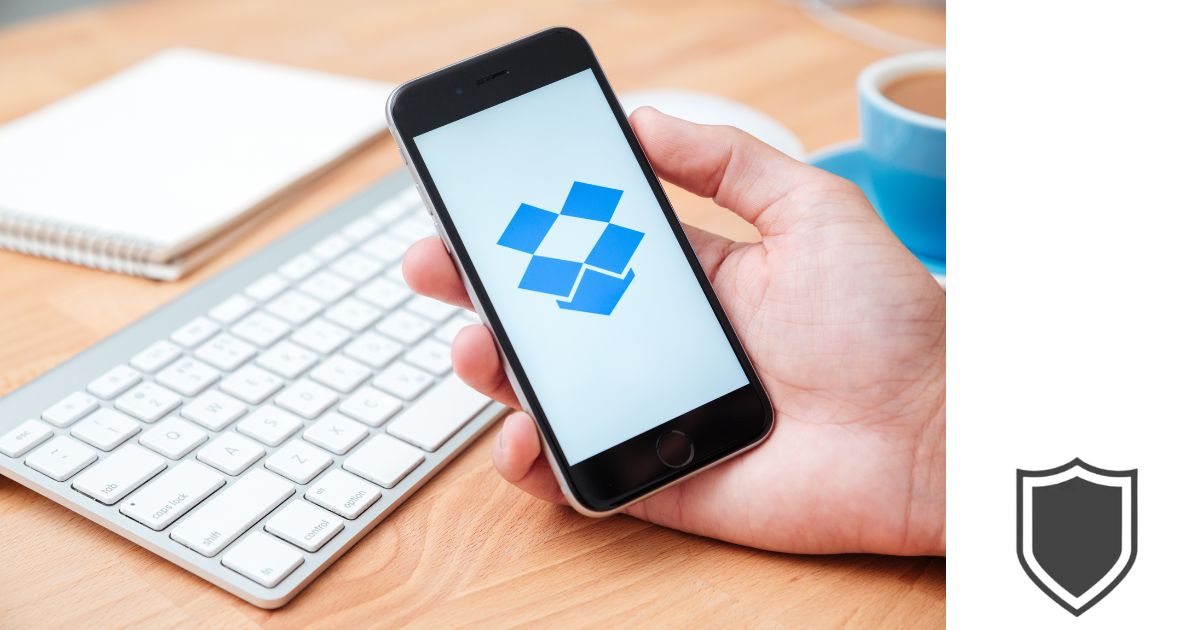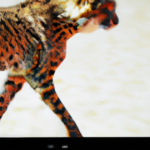In today’s age of digital progress, protecting the information we store in the cloud is critically important. Dropbox stands out as a key player in the domain of cloud security. Just as we wouldn’t leave our houses unlocked, we should also make sure our files in the cloud are secure and not exposed to risks.
Let’s get into how encryption for Dropbox acts as that robust lock, safeguarding our digital treasures from prying eyes and unwelcome intruders.
Table of Contents
Understanding Encryption
Encryption is the process of converting plain text into a coded message that can only be deciphered by someone with the right key. The idea is to make the message unreadable to anyone who intercepts it, so that even if they can see the message, they can’t understand it.
Encryption works by using a key to scramble the message. The key is a string of characters that is used to transform the message into a new form. The encrypted message can only be deciphered by someone who has the same key, which allows them to transform the message back into its original form.
Types of Encryption
There are two main types of encryption: symmetric and asymmetric. Symmetric encryption uses the same key to encrypt and decrypt the message. This means that anyone who has the key can decrypt the message, which makes it less secure.
Asymmetric encryption, on the other hand, uses two different keys: one to encrypt the message and another to decrypt it. This makes it more secure, as only the person with the private key can decrypt the message.
Dropbox and Encryption
Dropbox uses a combination of both symmetric and asymmetric encryption to keep your data safe. When you upload a file to Dropbox, it is encrypted using 256-bit Advanced Encryption Standard (AES) with a unique key. This means that even if someone manages to intercept your file, they won’t be able to read it without the key.
Dropbox also uses Secure Sockets Layer (SSL)/Transport Layer Security (TLS) to protect data in transit between Dropbox apps and their servers. SSL/TSL creates a secure tunnel protected by 128-bit or higher Advanced Encryption Standard (AES) encryption, which ensures that your data is safe from prying eyes.
In addition to these encryption methods, Dropbox also offers Dropbox Vault. This is a secure folder within your Dropbox account that requires a separate password to access. When you add files to your Vault, they are encrypted with an additional layer of protection.
Security Measures in Dropbox
Encryption is just one of the security measures they use to protect your data. They also have a team of security experts who work around the clock to monitor our systems for any potential threats. They use two-factor authentication to make sure that only authorized users can access your account. Dropbox also has strict access controls in place to ensure that only authorized employees can access your data.

Encryption Techniques Used by Dropbox
At Dropbox, they use a combination of encryption techniques to ensure that your files are secure both at rest and in transit. In this section, we will discuss the encryption techniques used by Dropbox and how they work.
At Rest Encryption
When your files are stored on Dropbox servers, they are encrypted using 256-bit Advanced Encryption Standard (AES) encryption. This encryption method is considered to be one of the most secure encryption standards available today. Each file is split into blocks, and each block is encrypted separately using AES encryption. This ensures that even if an attacker gains access to one block of your file, they will not be able to access the rest of the file.
In addition to AES encryption, Dropbox also uses a technique called delta sync. This means that only the blocks of a file that have been modified are synced to our servers, rather than the entire file. This reduces the amount of data that needs to be transferred, which can improve syncing times and reduce bandwidth usage.
In Transit Encryption
When you upload, download, or access files on Dropbox, the data is encrypted in transit using Secure Sockets Layer (SSL)/Transport Layer Security (TLS). SSL/TLS creates a secure tunnel between your device and our servers, which is protected by 128-bit or higher Advanced Encryption Standard (AES) encryption.
Dropbox also uses a technique called Perfect Forward Secrecy (PFS) to ensure that even if an attacker were to gain access to the encryption keys used to secure your data, they would not be able to decrypt it. PFS generates a unique encryption key for each session, which is discarded at the end of the session. This means that even if an attacker were to obtain the encryption key for one session, they would not be able to use it to decrypt data from other sessions.
Benefits of Encryption for Dropbox
Dropbox has implemented modern encryption standards to protect your sensitive data against brute force attacks, ransomware, malware, and data breaches—at all levels. Here are just a few of the benefits of encryption for Dropbox:
Data Protection
Encryption helps protect your files and folders from unauthorized access. When you upload a file to Dropbox, it is encrypted both in transit and at rest. This means that your data is protected as it travels from your device to their servers and while it is stored on their servers. They use Secure Sockets Layer (SSL)/Transport Layer Security (TLS) to protect data in transit between Dropbox apps and their servers. SSL/TSL creates a secure tunnel protected by 128-bit or higher Advanced Encryption Standard (AES) encryption.
In addition, Dropbox offers a unique storage architecture that provides an extra layer of protection against data breaches. Their storage architecture is designed to ensure that your data is not only encrypted but also fragmented and distributed across multiple servers. This makes it much more difficult for attackers to steal your data even if they manage to breach one of Dropbox’s servers.
User Privacy
Encryption also helps protect your privacy by ensuring that your data is only accessible to you and those you share it with. When you upload a file to Dropbox, it is encrypted using a unique encryption key that only you have access to. This means that even if someone were to gain access to our servers, they would not be able to read your data without your encryption key.
In addition, Dropbox offers a feature called Dropbox Vault, which allows you to store sensitive files in a separate, password-protected folder. This provides an extra layer of protection for your most sensitive data, ensuring that it is only accessible to those with the correct password.
Challenges of Encryption for Dropbox
Encrypting data is a crucial aspect of Dropbox’s security infrastructure. However, implementing encryption comes with its own set of challenges. In this section, we will discuss the key challenges we face when implementing encryption for Dropbox.
Key Management
One of the primary challenges of encryption is key management. Encryption keys are used to encrypt and decrypt data, and managing these keys is crucial to ensuring the security of data. Dropbox uses a combination of symmetric and asymmetric encryption, which requires the company to manage multiple keys for each user.
To manage encryption keys, they use a key management system that stores and manages keys securely. Their key management system ensures that keys are generated, stored, and distributed securely. They also use a combination of hardware and software-based key management solutions to ensure that keys are protected from unauthorized access.
Performance Issues
Another challenge of encryption is performance. Encryption can have a significant impact on the performance of applications, especially when working with large files. Dropbox uses a combination of techniques to ensure that encryption does not impact the performance of the service.
One technique is to encrypt data at rest, which means that data is encrypted when it is stored on Dropbox servers. This reduces the overhead of encryption during data transfer, which can help improve performance. They also use hardware-based encryption acceleration to improve the performance of encryption operations.
Comparison with Other Cloud Services’ Encryption
When it comes to cloud storage, security is a top priority. Dropbox is known for its strong encryption and security measures, but how does it compare to other popular cloud services like Google Drive and OneDrive? Let’s take a closer look.
Google Drive
Google Drive uses the Advanced Encryption Standard (AES) to protect files in transit and at rest. This encryption standard is widely recognized as secure and is used by many other cloud storage providers. However, Google Drive’s encryption is not end-to-end, which means that Google has access to your files and could potentially be forced to hand them over to authorities.
Google Drive also offers two-factor authentication, which adds an extra layer of security to your account. However, it’s important to note that two-factor authentication can be bypassed in certain situations, such as if someone gains access to your phone.
OneDrive
OneDrive uses the same encryption standard as Google Drive, AES, to protect files in transit and at rest. Like Google Drive, OneDrive’s encryption is not end-to-end, which means that Microsoft has access to your files and could potentially be forced to hand them over to authorities.
OneDrive also offers two-factor authentication, as well as Personal Vault, a feature that allows you to store your most sensitive files in a separate, more secure area of your OneDrive account. However, it’s important to note that Personal Vault is only available to users with a Microsoft 365 subscription.
Conclusion
Overall, Dropbox’s encryption measures are on par with those of Google Drive and OneDrive. All three services use the same encryption standard to protect files in transit and at rest, and all offer two-factor authentication as an extra layer of security.
That being said, it’s important to remember that no cloud storage service is completely immune to breaches or hacking attempts. It’s always a good idea to take additional steps to protect your data, such as using a strong, unique password and enabling two-factor authentication.

Future of Encryption for Dropbox
Dropbox is constantly working to improve the security of the platform, and encryption is a key component of their strategy.
Emerging Encryption Technologies
One area of focus is emerging encryption technologies. For example, they are exploring the use of homomorphic encryption, which allows computations to be performed on encrypted data without first decrypting it. This technology has the potential to greatly enhance the security of the Dropbox platform by performing complex operations on user data without ever exposing it to potential attackers.
Another area of interest is post-quantum cryptography. As quantum computing becomes more powerful, traditional encryption algorithms will become vulnerable to attacks. Post-quantum cryptography offers a potential solution by using mathematical problems that are believed to be resistant to quantum computing.
In the vast expanse of the digital cloud, ensuring our data remains secure and private is a pressing concern. Through the power of encryption for Dropbox, we’ve witnessed how we can fortify our files and documents against potential breaches.
As technology evolves and cyber threats become more sophisticated, staying informed and utilizing the best encryption practices will be our first line of defense.
Remember, in this digital age, the security of our data is only as strong as our commitment to protect it. Embrace encryption, and let your digital data soar confidently in the cloud.
- Amazon Email Phishing: How to Identify and Avoid Scams - May 11, 2025
- Malwarebytes vs McAfee: Decoding the Ultimate Antivirus Battle - May 11, 2025
- Best Antivirus for Windows 10: Expert Recommendations for 2023 - May 11, 2025










1 thought on “Encryption for Dropbox: Securing Your Files in the Cloud”